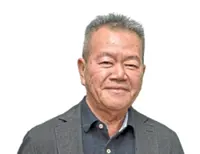Physiotherapy for stroke patients is not just about exercises and movement, but also incorporates technology such as functional electrical stimulation and virtual reality. — Photos: SUNWAY MEDICAL CENTRE VELOCITY
There you are, walking around the house, maybe on your way to get something to eat or to the living room to watch some TV.
All of a sudden, one side of your body goes numb and weak, and you lose your balance, causing you to collapse on the floor.
When you try to call for help, you find that you can’t speak properly with your speech sounding slurred.
You realise that you can’t see properly either, as your vision has become blurry.
And when you look at your face in the mirror, you realise that one side is drooping down, but not the other.
You are most likely experiencing a stroke, the third most common cause of death in Malaysia.
This emergency condition occurs when the brain is deprived of vital oxygen supply, either when a blood clot blocks off a blood vessel supplying the brain (ischaemic stroke) or when one of these blood vessels ruptures and starts bleeding (haemorrhagic stroke).
According to consultant neurologist Dr Kok Chin Yong. your brain cells will start to die within minutes after the stroke hits you – about 2,000,000 cells every minute.
Therefore, you need to get help and go to the nearest hospital’s emergency department as soon as possible.
The good news is that there are immediate treatments that can not only save your life, but also minimise any disability you might have from the stroke.
Ischaemic strokes are the most common type of stroke, comprising three-quarters of all cases.
For this type of stroke, the first and most immediate treatment is the administration of tissue plasminogen activators (tPAs), which help break down blood clots.
Says Dr Kok: “For an ischaemic stroke, the target is to unblock the blood clot as soon as possible.
“We can do this with an intravenous (IV) clot-busting agent called alteplase.
“The current guidelines state a cut-off point of 4.5 hours from the onset of symptoms in order to derive benefit from this treatment.
“Hence, time is brain.”
He notes that alteplase is the only US Food and Drug Administration-approved tPA for acute ischaemic stroke at the moment.
Another treatment available in certain hospitals, he adds, is a clot-removal procedure called mechanical thrombectomy, which is done by an interventional radiologist.
Meanwhile, haemorrhagic strokes are usually treated by the neurosurgeon or interventional radiologist.
Explains consultant neurosurgeon Dr Gerard Arvind Martin: “Choosing whether to take the patient to the operating room or not can depend on various factors, such as age and condition of the patient, the level of consciousness and extent of bleeding, all of which the surgeon takes into consideration before performing surgery.
“In those cases where a subarachnoid haemorrhage has occurred due to a suspected aneurysmal rupture, a further scan called an angiogram will be required to determine precisely the site of bleeding.
“Angiograms can be either via computed tomography (CT) scan or a catheter, which is typically carried out by a radiologist in an angiogram suite.
“Depending on the findings, the surgeon can then elect to operate and clip the ruptured aneurysm, or consider endovascular techniques, which are performed by an interventional radiologist.”
If you are lucky, you would have survived your stroke with no or minor complications and have a quick recovery.
However, many stroke survivors will face long-term disability, which can be physical or cognitive.
For example, patients may experience paralysis of the side affected by the stroke; weak coordination; difficulty in speaking, understanding, reading and writing; and difficulty concentrating.
This is where rehabilitation comes in.
Says Dr Kok: “This is an area that is often given less attention, when in fact, to me, it is equally important as the acute treatment for stroke.
“A good rehabilitation programme improves disability and prevents complications.”
According to Sunway Medical Centre Velocity Rehabilitation Centre head Maxim Chea, stroke rehabilitation has to be individualised to the patient as it depends on the part of the body or type of ability affected by the stroke.
He explains that there are three main types of rehabilitation therapy: physical therapy, technology-assisted physical therapy (e.g. functional electrical stimulation and virtual reality), and cognitive and emotional therapy.
Visual rehabilitation is also available for those whose vision is affected by stroke.
For example, consultant neuro-ophthalmologist Dr Lakana Kumar shares that “Double vision and peripheral loss of vision can be treated with prisms incorporated into glasses for patients to wear.”
Rehabilitation is usually carried out by a team consisting of physiotherapists, occupational therapists, speech therapists, and dieticians/nutritionists, among others.
In addition to physical and cognitive problems, patients might easily become depressed, overly anxious and panic easily.
Says consultant psychiatrist Dr Lim Wai Jenn: “Stroke survivors are at significantly higher risk for neuropsychiatric conditions such as post-stroke depression (one in three patients), anxiety (one in four patients), and other changes in personality and behaviour.
“These conditions impede the rehabilitation process and degree of recovery in post-stroke patients.
“They also significantly impact the patients’ long-term functioning and quality of life, and can even lead to higher mortality rates.
“Early psychiatric assessment and intervention is essential.”
She notes that caregivers also need support and psychoeducation on how best to support patients in regaining function.
While being affected by a stroke is a frightening event, rest assured that there are treatments and therapies available to help you manage this condition – just remember that you need to seek medical help as soon as possible.
This article is courtesy of Velocity Neurocentre, Sunway Medical Centre Velocity.







